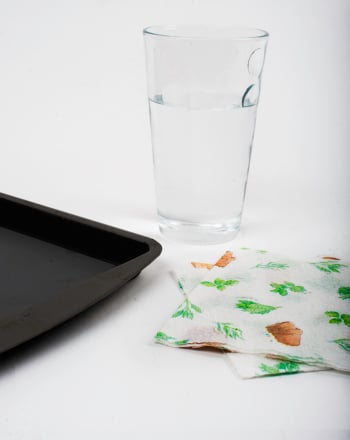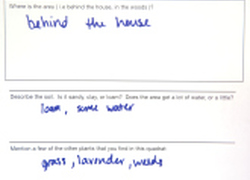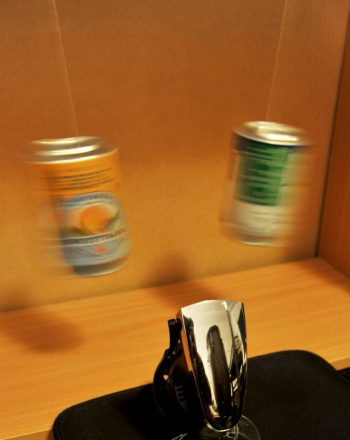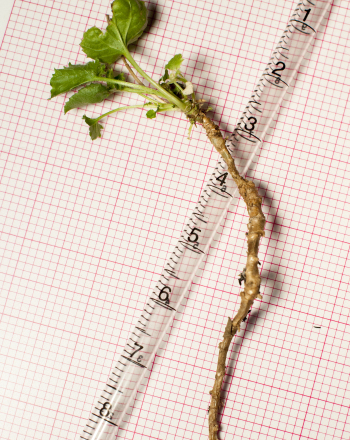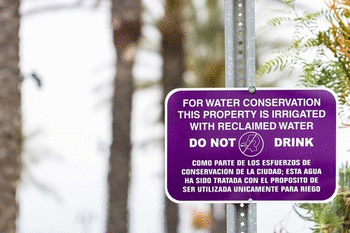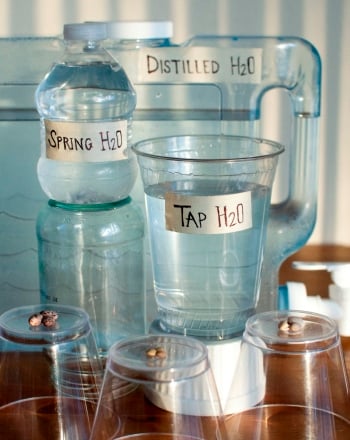Science project
Plant Phototropism Experiment
As plants grow, they move up toward the light. But what is a plant’s favorite color? Do plants move toward some colors more than others?
Problem
Do plants bend toward certain colors of light?
Materials
- 2 1-foot tall cardboard boxes with lids
- Piece of cardboard
- Ruler
- 2 small lamps
- 2 full spectrum light bulbs
- Box cutter knife
- Masking tape
- 1 3” x 3” piece of clear, red, green, and blue cellophane
- Water
- Spray bottle
- Camera
- 8 bean seeds
- 8 small pots
Procedure
- First, get your plants growing. Plant two of your bean seeds in two different pots, water them, and wait for them to poke out of the ground.
- While you’re waiting, get your boxes ready. Cut a hole 2” in diameter about 3 inches from the bottom of each box. Place the clear cellophane over the hole. This will let all of the light into the box. Over the hole in the other box, place the red cellophane. This will only let red light into the box.
- Put one plant in the first box and one in the second. Use a ruler to position each bean plant two inches away from the cellophane window. Take a photo of the plants, looking downward from the top of the box.
- Put the boxes on different sides of the same room.
- Now it’s time to light things up! Put the lamps next to the boxes on the side with the cellophane window. Take out your ruler again and measure to make sure that the lamps are the same distance from the hole.
- Put the lids on each box.
- Every morning, turn on each lamp. Every night, turn off the lamps before you go to bed. Leave the plants to grow for a week.
- After a week has passed, remove the lid and take a photo looking downward. Then remove the plants and take a photo from the front. Do the plants look different? Is one taller than the other? Is one twisted in a different direction?
- Do the same experiment with new bean plants, but change the color of cellophane to blue. Finally, repeat the experiment with green cellophane.
- Compare the photos of each bean plant after it had been growing for a week. Did the plants turn more toward a certain color? Was there a color they didn’t like?
Results
The control plants will do better than the plants that are only exposed to one wavelength of light. The plants will grow better in red and blue light than in green light. The plants will grow toward red and blue light but will not move toward the green light.
Why?
Plants love the light, right? Yes and no. Plants do love the light, but they like some wavelengths of light more than others.
When you look at a rainbow, you can see that the visible spectrum of light actually has different colors or wavelengths inside it. The visible spectrum is the light that we can see. Different objects reflect different types of light. A blue bowl reflects blue light. A green plant reflects green light.
Inside a plant are chloroplasts. Inside the chloroplasts are tiny molecules called photopigments. Photopigments help the plant absorb light. A plant has different types of photopigments so it can absorb different colors of light.
When natural light shines on a plant, that plant takes in the light from the different wavelengths and uses it to make food. This natural light is called white light, and it contains all of the types of light. If there’s only one color of light shining on a plant, then only some of the photopigments work, and the plant doesn’t grow as well. This is why your plant under the full light spectrum grew better than the plants with the cellophane filters.
Plants also move toward the light. Seeds push little leaves up from the ground into the light. A house plant in a dark room will grow toward the light. This movement in response to light is called phototropism. When a plant moves toward the light, it’s called positive tropism. When a plant moves away from light, it’s called negative tropism.
How do plants move? They do so with the help of chemicals called auxins. Think of auxins as an elastic band for cells. They help cells get longer and move. Sunlight reduces auxin, so the areas of the plant that are exposed to sunlight will have less auxin. The areas on the dark side of the plant will have more auxin. That means that they will have long, stretchy cells. This allows the plant to move toward the light.
The plants in your experiment likely showed positive tropism, except when it came to the green light. Why did the plants not move toward the green light? Plants are green, which means that they reflect green light. It bounces off the leaves. This means that they can’t use green light very well, and the green light bounces off the plant instead of encouraging movement toward the light.
Digging Deeper
What would happen if you left plants for a long time in light that was only red or blue? Would they survive?
Education.com provides the Science Fair Project Ideas for informational purposes only. Education.com does not make any guarantee or representation regarding the Science Fair Project Ideas and is not responsible or liable for any loss or damage, directly or indirectly, caused by your use of such information. By accessing the Science Fair Project Ideas, you waive and renounce any claims against Education.com that arise thereof. In addition, your access to Education.com's website and Science Fair Project Ideas is covered by Education.com's Privacy Policy and site Terms of Use, which include limitations on Education.com's liability.
Warning is hereby given that not all Project Ideas are appropriate for all individuals or in all circumstances. Implementation of any Science Project Idea should be undertaken only in appropriate settings and with appropriate parental or other supervision. Reading and following the safety precautions of all materials used in a project is the sole responsibility of each individual. For further information, consult your state's handbook of Science Safety.



